
TVS Eyes For E-mobility Supremacy In Europe
- Jan 28, 2022
- Views : 5976


The electric two-wheeler space is finally gaining enough traction to compete with ICE scooters -- the preferred choice amongst most individuals, at least for now. The advancements in battery technology along with state subsidies have made electrics a lot more practical and affordable.
TVS thinks that electrics will soon replace ICE scooters -- one of the many reasons why it’s the only mainstream manufacturer to offer both options in its portfolio. But is the iQube really that good?
Does It Match Up To ICE Scooters?
|
Specifications |
iQube |
Ather 450X |
|
Range (Eco) |
83km (tested) 75 (claimed) |
108.6km (tested) 116 (claimed) |
|
Battery Type |
Lithium-ion, 21700 cell |
Lithium-ion |
|
Usable battery capacity |
2.25kWh |
2.4kWh |
|
Peak power |
4.4kW (3kW, Normal) |
5.4kW |
|
Charging |
|
|
|
0-80% (Home Charging) |
5 hours |
3 Hours 25 Minutes |
|
0-100% (Home Charging) |
7 hours |
5 Hours 30 Minutes |
|
Fast-charging Rate (0-50% SOC) |
NA |
1 km/min |
|
Fast-charging Rate (50-80% SOC) |
NA |
1 km/min |
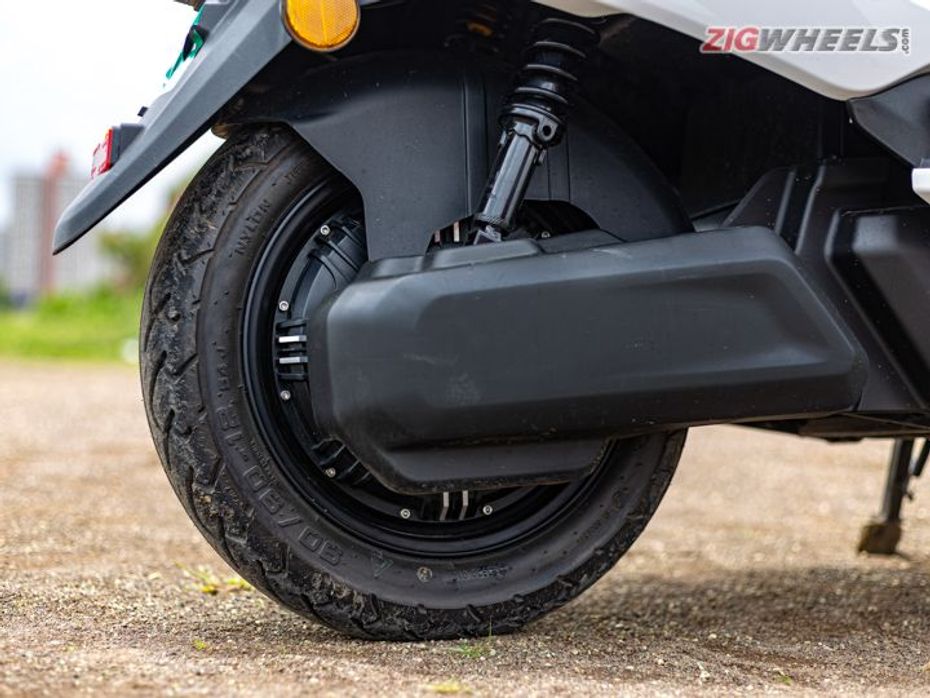
The way the iQube delivers its power will surprise you. Unlike the rest of the e-scooters in its segment, the iQube features a hub motor. It’s IP67 rated which means you need not worry about water seeping into the motor. However, TVS recommends not to keep the scooter submerged for any longer than thirty minutes. So leaving the scooter parked in a flooded area is a big NO.

As for the motor, it's capable of producing 3kW of continuous power and a peak power of 4.4kW for a short duration of 60 seconds. That may not seem like much on paper, but it's actually quite quick. For a frame of reference, despite being the heavier scooter, it's not only quicker but feels more responsive than its ICE counterpart, the TVS Jupiter. The smooth and instant delivery of power also makes quick overtakes an absolute breeze.
|
Acceleration |
iQube |
Ather 450X |
Ather 450 |
TVS NTorq 125 |
|
0-40kmph |
4.76 seconds |
3.41 seconds |
3.84 seconds |
4.66 seconds |
|
0-60kmph |
9.54 seconds |
6.94 seconds |
8.27 seconds |
10.24 seconds |
|
0-80kmph |
NA |
13.74 seconds |
NA |
30.21 seconds |

Even Eco for that matter is actually very usable in the city, which isn't the case with other e-scooters. Open the throttle and there's enough torque to help you weave through traffic. The speed is capped at 50kmph (45kmph true speed) which is more than enough for city use.

Switching to Power Mode gives you access to the full 78kmph the motor has to offer. This is perfect for when you move to open stretches of roads or highways.
Roll off the throttle and the regenerative braking kicks in. It uses the motor to shed speed while topping off the battery just a tiny bit. However, this feature only activates itself once you drop down to 65km of range. Another plus is that you don’t need to rely on the brakes completely while riding. The intuitiveness of the motor offers a rich riding experience.
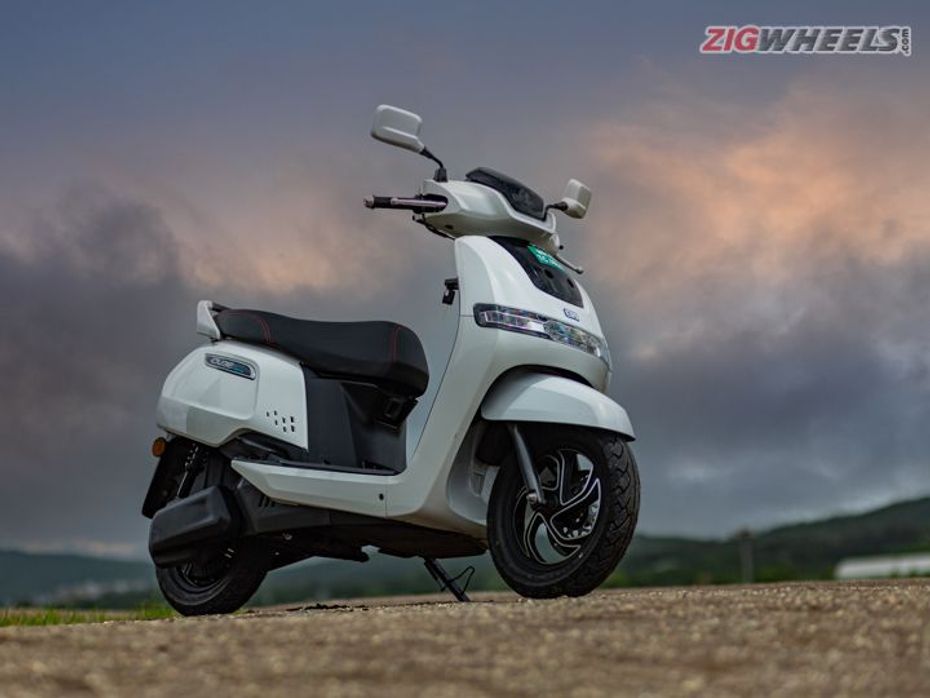
Interestingly enough, even when the battery percentage drops down to 1%, the iQube doesn't go into limp mode, like other EVs. Instead, it uses every ounce of the battery to ensure you have up to 30kmph on offer, making it very usable till the very end.
And that's not all. TVS offers a 3-year/50,000km warranty on the battery which should last you a lifetime, considering the TVS doesn’t offer the option for fast charging for the iQube,, as TVS says this reduces the effects of battery degradation. On the flipside, you won't be able to quickly top up the battery in case of an emergency, so planning your rides is absolutely crucial.
Like most e-scooters in this segment, the iQube packs connected features through which one can monitor the vehicle’s SOC remotely using TVS iQube app, set geo fences and for navigation too.
Fun To Ride?
|
Specifications |
iQube |
Ather 450X |
|
Frame |
Tubular, underbone |
Machined aluminium chassis |
|
Front Suspension |
Telescopic fork |
Telescopic fork |
|
Rear Suspension |
Twin |
Monoshock |
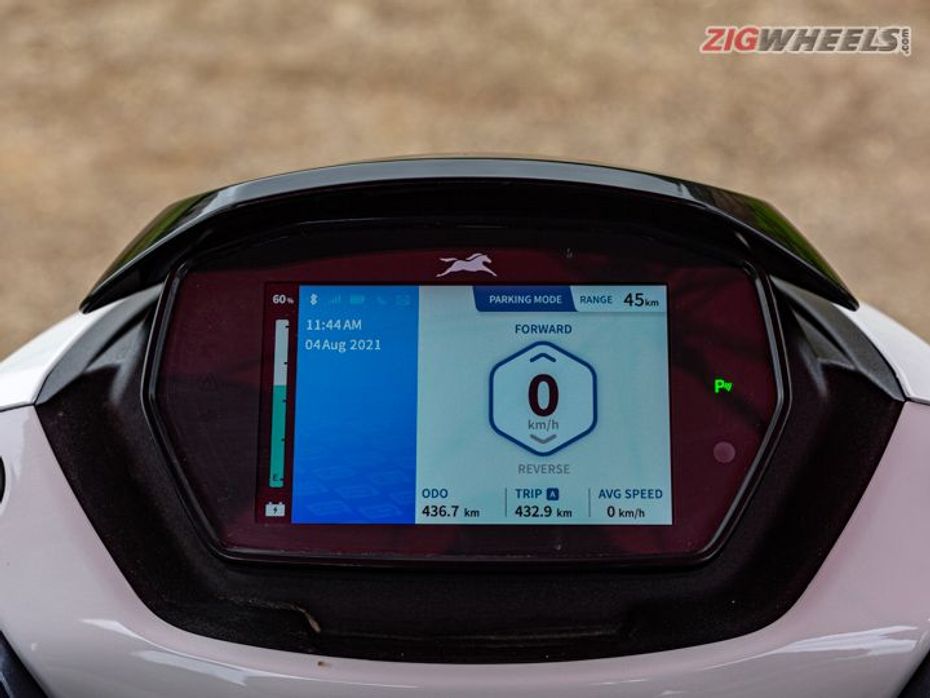
At 118kg, the iQube is on the heavier side. But the weight can only be felt while moving it around in the parking lot. Thankfully, the iQube does come with Q-park assist which not only lets you reverse the scooter using the motor but also go forward by simply long pressing on the button. However, engaging the modes through the switches is a bit difficult.

Once you get going, the weight just disappears. Besides, the weight of the batteries is well distributed, so the scooter feels light and nimble.
The underlying hardware is pretty much the same as the Jupiter. You have a telescopic fork, but dual shock absorbers at the rear instead of a single shock. TVS choose to go for this setup to balance the
additional weight on the rear wheel.
While the suspension setup isn’t as plush as say the Jupiter, it does a decent enough job at absorbing bumps and undulations. What you do notice, however, is the firmness from the rear shocks which might even toss you off the seat on really sharp bumps.
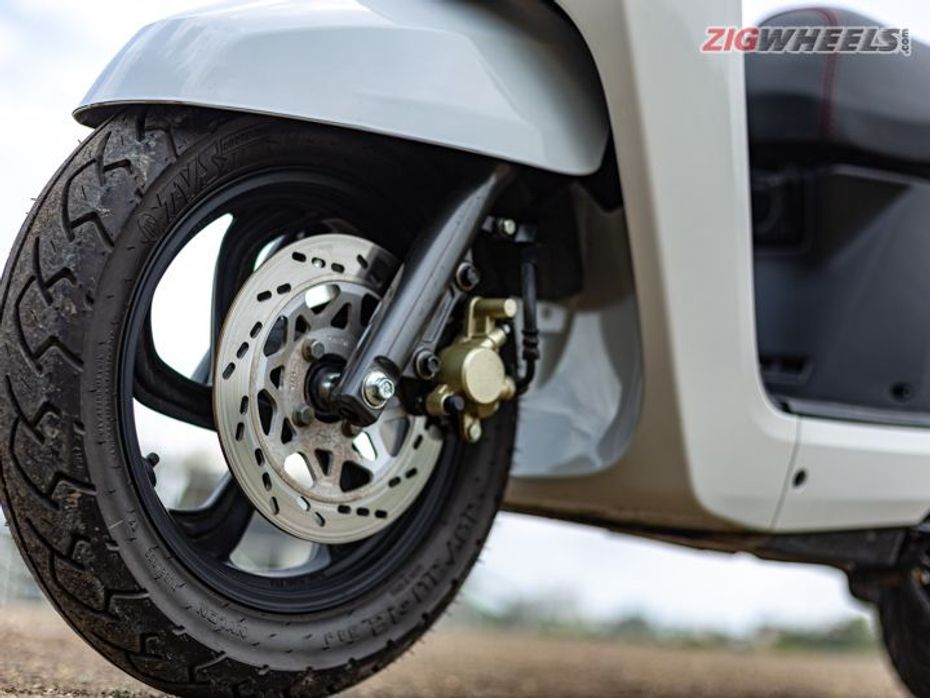
|
Brakes |
TVS iQube |
Ather 450X |
|
Brake Front |
220mm, disc |
200mm, disc |
|
Rear |
130mm, drum |
190mm, disc |
|
60-0kmph |
22.16m |
22.14 |
The iQube’s braking setup comprises a disc up front and a drum at the rear, offering good braking performance. It's on par, if not better than the segment standards.
Comfortable Enough?
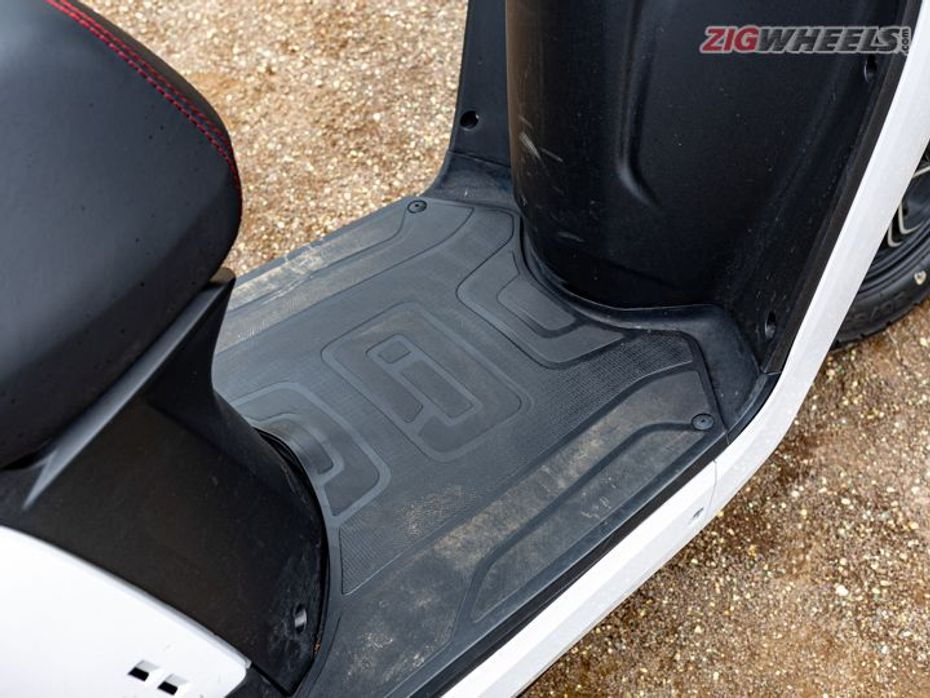
Despite its weight, the iQube feels light and nimble on the go. TVS has managed to pull this off by lowering the centre of gravity using clever positioning of the battery packs. There are three to be precise, one stored under the floorboard and the other two in front of the underseat storage. Despite this, the saddle still sits at a manageable 770mm, just a tad taller than the Jupiter. Average-sized riders will still find it quite accessible.

The seat itself is long and wide enough for two aboard. It’s well-padded too, which means you can spend extended amounts of time on the scooter without throwing your back out. The positioning of the footpegs offers enough room for a 5’10” pillion. However, if you do have family members who prefer sitting sideways, we would recommend opting for the side step which TVS offers as an accessory.
If you’re running errands and have to carry groceries along, the iQube does just fine. The floorboard is wide enough and offers a decent amount of foot room even with a small package. Same goes for the rectangular underseat storage which can easily accommodate groceries or even a 14-inch laptop.

However, there are a couple of misses. For instance, the iQube doesn't get a four-in-one combi-lock system to remotely access the seat, there's no apron-mounted phone holder either, space that's occupied by the battery charging port instead. While you get a USB charger, it's placed in the underseat storage.
Keeps A Low Profile

I wouldn't call the iQube beautiful because it's not. It's simple, elegant, minimalist and contemporary. The full LED headlight and turn indicators mounted on the apron looks modern and so does the tail light. Touches like the blacked-out fly screen, red stitches on the seat and the iQube logo on the swingarm lighting up at a standstill are neat design features that one would appreciate.
Although, there are areas where the scooter could have done better. The switchgear quality, for instance, feels a bit cheap. The hazard switch on the right-hand side just feels unnecessarily large. The tactile feel of some switches isn't on par with the Jupiter. As a result, you may struggle to try to start the motor or simply change the riding mode.
Final Thoughts
|
Running Costs |
TVS iQube Electric |
TVS Jupiter ZX Disc BS6 |
|
Battery / fuel tank capacity |
2.25kWh |
5-litre |
|
Range |
83km in Eco (tested) |
64km/litre (city) |
|
Charging/ current fuel costs |
2.25 x assuming Rs 10 per kW |
Rs 107.83 |
|
Calculation |
22.5/83 x 50,000km |
107.83/64 x 50,000 |
|
Fuel cost per 50,000km |
Rs 13,554 |
Rs 83,593 |
|
iQube savings |
Rs 70,039 |
|
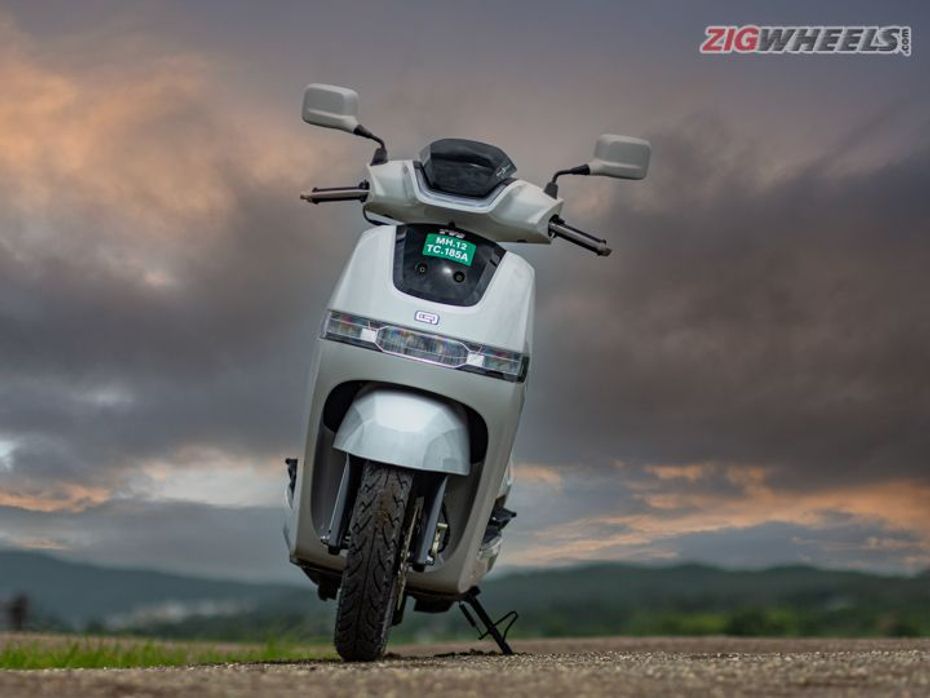
We think the iQube could easily fit into your family. It has enough performance and range for your daily runabouts, with features designed to make riding much easier. The more time you spend on the scooter, the more you fall in love with it. You would actually find yourself gravitating towards the iQube rather than your ICE scooter. What really makes it click is the sheer smoothness and rich experience from the motor. The firm suspension setup is something you will get used to over time.
Besides, with the government subsidies, the iQube comes in at Rs 1,00,777, that’s just a little over Rs 12,000 more than the Jupiter. Even when you factor in the ever-increasing fuel costs, and the eventual battery replacement costs, you actually end up saving a lot of money. So we’d say that the iQube has definitely narrowed the gap between ICE and electric scooters, and could very well be the family scooter you want.
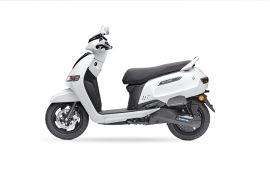

TVS Eyes For E-mobility Supremacy In Europe

TVS iQube Electric vs BS6 Jupiter ZX Disc: Road Test Review

2024 Bajaj Chetak Premium First Ride Review: The Perfect Commuter EV

Ather Rizta Road Test Review: Good, But Not Completely There Yet

Ather Rizta Review - The Perfect Family Electric Scooter?

Ola S1 Pro vs Ather 450X Comparison Review: Is Ola Really The Game...

Ola S1 Pro MoveOS 3 Review: Better But Still Not Faultfree

Honda Activa 6G Review: Six Key Takeaways
 Honda Activa e
Honda Activa e
 Bajaj Chetak
Bajaj Chetak
 Ola S1 X
Ola S1 X
 Ather Rizta
Ather Rizta
India's largest automotive community
 TVS NTORQ 125
Rs. 86,841
TVS NTORQ 125
Rs. 86,841
 TVS Jupiter
Rs. 74,691
TVS Jupiter
Rs. 74,691
 TVS Jupiter 125
Rs. 79,299
TVS Jupiter 125
Rs. 79,299
 TVS XL100
Rs. 44,999
TVS XL100
Rs. 44,999
 TVS Scooty Zest
Rs. 74,476
TVS Scooty Zest
Rs. 74,476
 TVS Apache RTR 160
Rs. 1.20 Lakh
TVS Apache RTR 160
Rs. 1.20 Lakh
 TVS Raider
Rs. 85,010
TVS Raider
Rs. 85,010
 TVS Ronin
Rs. 1.35 Lakh
TVS Ronin
Rs. 1.35 Lakh
 TVS Apache RTR 160 4V
Rs. 1.24 Lakh
TVS Apache RTR 160 4V
Rs. 1.24 Lakh
 TVS Apache RTR 310
Rs. 2.49 Lakh
TVS Apache RTR 310
Rs. 2.49 Lakh
 Mahindra BE 6
Rs. 18.90 Lakh
Mahindra BE 6
Rs. 18.90 Lakh
 Hyundai Creta Electric
Rs. 17.99 Lakh
Hyundai Creta Electric
Rs. 17.99 Lakh
 Mahindra XEV 9e
Rs. 21.90 Lakh
Mahindra XEV 9e
Rs. 21.90 Lakh
 MG Windsor EV
Rs. 13.99 Lakh
MG Windsor EV
Rs. 13.99 Lakh
 Tata Curvv EV
Rs. 17.49 Lakh
Tata Curvv EV
Rs. 17.49 Lakh